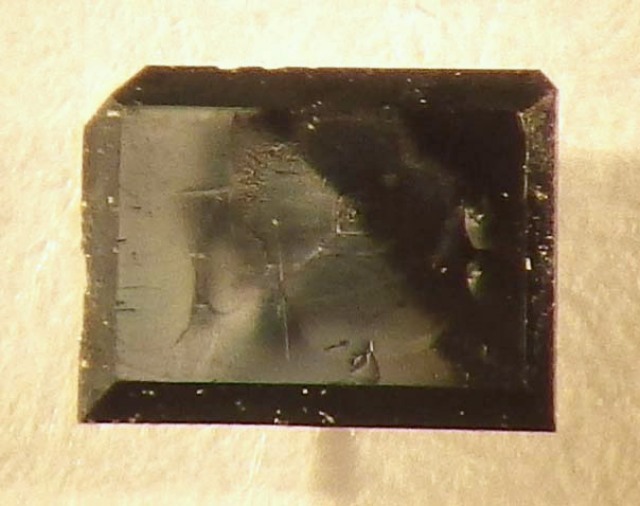 Samarium hexaboride, abbreviated SmB6, is a compound made of the metal samarium and the rare metalloid boron. University of Michigan researchers have confirmed its unusual electrical properties and shown how it could advance the development of next-generation transistors for quantum computers. Image credit: Gang Li
Samarium hexaboride, abbreviated SmB6, is a compound made of the metal samarium and the rare metalloid boron. University of Michigan researchers have confirmed its unusual electrical properties and shown how it could advance the development of next-generation transistors for quantum computers. Image credit: Gang Li
University of Michigan scientists have discovered a number of properties of the compound samarium hexaboride, which may pave the way for next-generation electronics and quantum computers.
This shimmering, strange material has mystified physicists for several decades. The researchers have finally managed to classify samarium hexaboride, which is a mystery which has been investigated since the early 1960s.
The researchers have presented the first direct proof that samarium hexaboride (SmB6) is a topological insulator. Topological insulators are an interesting class of solids, which are good conductors of electricity across their surface. However they are poor conductors of electricity through their core. Despite the chemical composition of topological insulators being the same throughout, they behave in this two-faceted manner.
The University of Michigan scientists used a torque magnetometry method in order to study tell-tale oscillations in response of a material to a magnetic field showing the manner in which electric current flows through it. This method also proves that the samarium hexaboride surface holds unique Dirac electrons, which are particles that can enable researchers to rise above one of the most pertinent issues in quantum computing.
These characteristics are interesting to researchers as SmB6 is a highly correlated material. Its electrons interact very closely with each other when compared to most solids. As a result, its interior core behaves as an insulator.
This in-depth knowledge of samarium hexaboride raises the prospect that engineers may one day route the electric current flow in quantum computers, similar to silicon in traditional electronics, according to a co-author of a paper on the findings published in Science and Assistant professor of physics in the College of Literature, Science, Lu Li.
Li commented: "Before this, no one had found Dirac electrons in a strongly correlated material. We thought strong correlation would hurt them, but now we know it doesn't. While I don't think this material is the answer, now we know that this combination of properties is possible and we can look for other candidates."
The scientific community is always critical… They want very strong evidence. We think this experiment finally provides direct proof of our theory.
Kai Sun, Assistant professor of Physics at the University of Michigan
Currently researchers have only observed the behaviour of samarium hexaboride at extremely cold temperatures. The study 'Two-dimensional Fermi surfaces in Kondo Insulator SmB6' has been published in the Science journal.